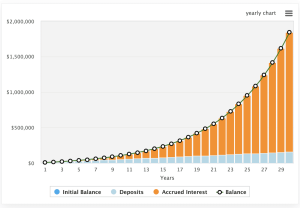The Lloyds (LSE: LLOY) share price has been flying this year. It’s up 21.2%. In the last 12 months, the stock has posted an impressive 34.6% gain, far outperforming the FTSE 100.
Last week, its share climbed 5.6%, partly fuelled by the general election result. Lloyds’ performance over the last five years has been underwhelming, to say the least. But it seems that the Black Horse Bank could be turning a corner.
With that, the stock is nearing its half-decade high. So when will it reach it?
A five-year high?
The stock’s high inthe last five years is 64.3p. That means its share price would have to rise 10.3% to reach it. I’m wondering if it could hit it in the next year.
But is a double-digit rise in that period possible? Well, one way to help answer this is to look at analysts’ target prices.
Of 19 analysts offering a 12-month target price, the average is 60.4p. That’s a 3.7% premium from its current price.
The highest target is 72p, a 23.5% rise. The lowest is 50p, a 14.2% decline. Going on that, it seems Lloyds shareholders may have to wait a tad longer before it potentially surpasses the benchmark.
Momentum on its side
That said, analysts’ predictions can be wrong, and the stock has momentum on its side. There’s plenty to suggest Lloyds could keep rising in the months to come and reach the target.
To start, I think the stock looks severely undervalued. Lloyds has a price-to-earnings (P/E) ratio of 7.8. That’s way below the Footsie average of 11. Its forward P/E also looks cheap at 8.9.
Other valuation metrics can be used to highlight how cheap Lloyds looks. For example, its price-to-book ratio is 0.7, where 1 is considered fair value. With that in mind, I think its share price still has plenty of growing room.
Shrinking rates
Of course, while Lloyds has been gaining pace, there’s also a host of issues that could hinder the stock.
There’s a large potential that the months ahead will be choppy for the UK economy. Inflation is falling, but it remains a threat. On top of that, interest rate cuts seem imminent.
Many are expecting the Bank of England to make its first in the next few months. Lower rates will negatively impact banks’ net income margins. We’ve already seen this play out in Q1.
Extra cash
However, while rate cuts will shrink Lloyds’ margin, they should provide market sentiment with a boost. I’m expecting this to reflect on the Lloyds share price in the years ahead.
What’s more, I can make juicy passive income with Lloyds’ 4.7% dividend yield. That’s above the Footsie average of 3.6%. Lloyds’ dividend is covered around two times by earnings and its payout rose by 15% last year to 2.76p.
Time to buy more shares?
Whether it continues to rise in the next year or not isn’t a big concern of mine. I own shares in the bank and see real value over the long term. My average buy price is 48.7p. So far, I’m sitting on a 19.7% paper gain.
If I had the cash, I’d happily snap up more shares today. I plan to slowly build up my position in the stock over the upcoming months.
This post was originally published on Motley Fool







